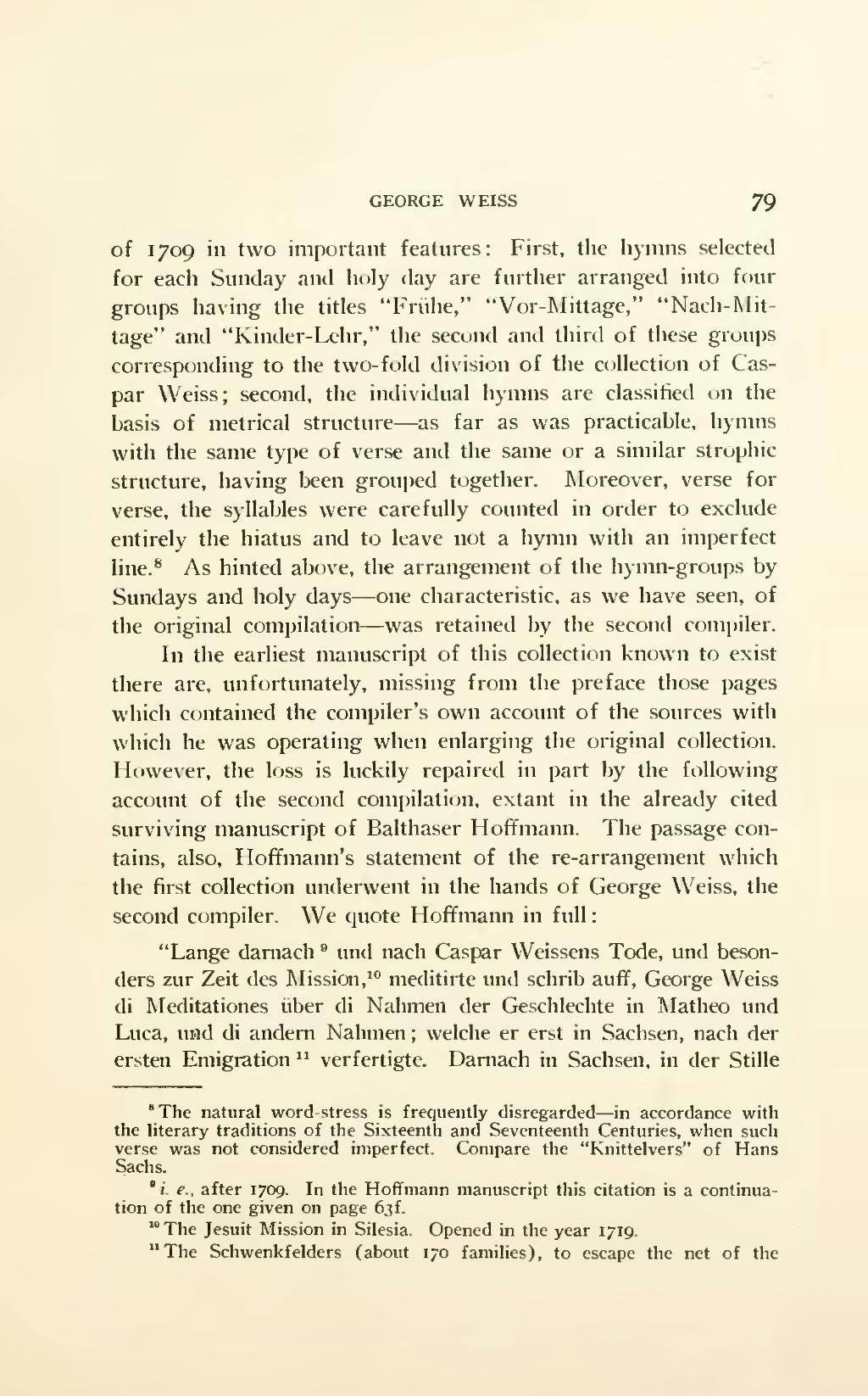of 1709 in two important features: First, the hymns selected for each Sunday and holy day are further arranged into four groups having the titles "Frühe," "Vor-Mittage," "Nach-Mittage" and "Kinder-Lehr," the second and third of these groups corresponding to the two-fold division of the collection of Caspar Weiss; second, the individual hymns are classified on the basis of metrical structure—as far as was practicable, hymns with the same type of verse and the same or a similar strophic structure, having been grouped together. Moreover, verse for verse, the syllables were carefully counted in order to exclude entirely the hiatus and to leave not a hymn with an imperfect line.[1] As hinted above, the arrangement of the hymn-groups by Sundays and holy days—one characteristic, as we have seen, of the original compilation—was retained by the second compiler.
In the earliest manuscript of this collection known to exist there are, unfortunately, missing from the preface those pages which contained the compiler's own account of the sources with which he was operating when enlarging the original collection. However, the loss is luckily repaired in part by the following account of the second compilation, extant in the already cited surviving manuscript of Balthaser Hoffmann. The passage contains, also, Hoffmann's statement of the re-arrangement which the first collection underwent in the hands of George Weiss, the second compiler. We quote Hoffmann in full:
"Lange darnach[2] und nach Caspar Weissens Tode, und besonders zur Zeit des Mission,[3] meditirte und schrib auff, George Weiss di Meditationes iiber di Nahmen der Geschlechte in Matheo und Luca, und di andern Nahmen ; welche er erst in Sachsen, nach der
ersten Emigration[4] verfertigte. Darnach in Sachsen, in der Stille
- ↑ The natural word-stress is frequently disregarded—in accordance with the literary traditions of the Sixteenth and Seventeenth Centuries, when such verse was not considered imperfect. Compare the "Knittelvers" of Hans Sachs.
- ↑ i. e., after 1709. In the Hoffmann manuscript this citation is a continuation of the one given on page 63f
- ↑ The Jesuit Mission in Silesia. Opened in the year 1719.
- ↑ The Schwenkfelders (about 170 families), to escape the net of the
